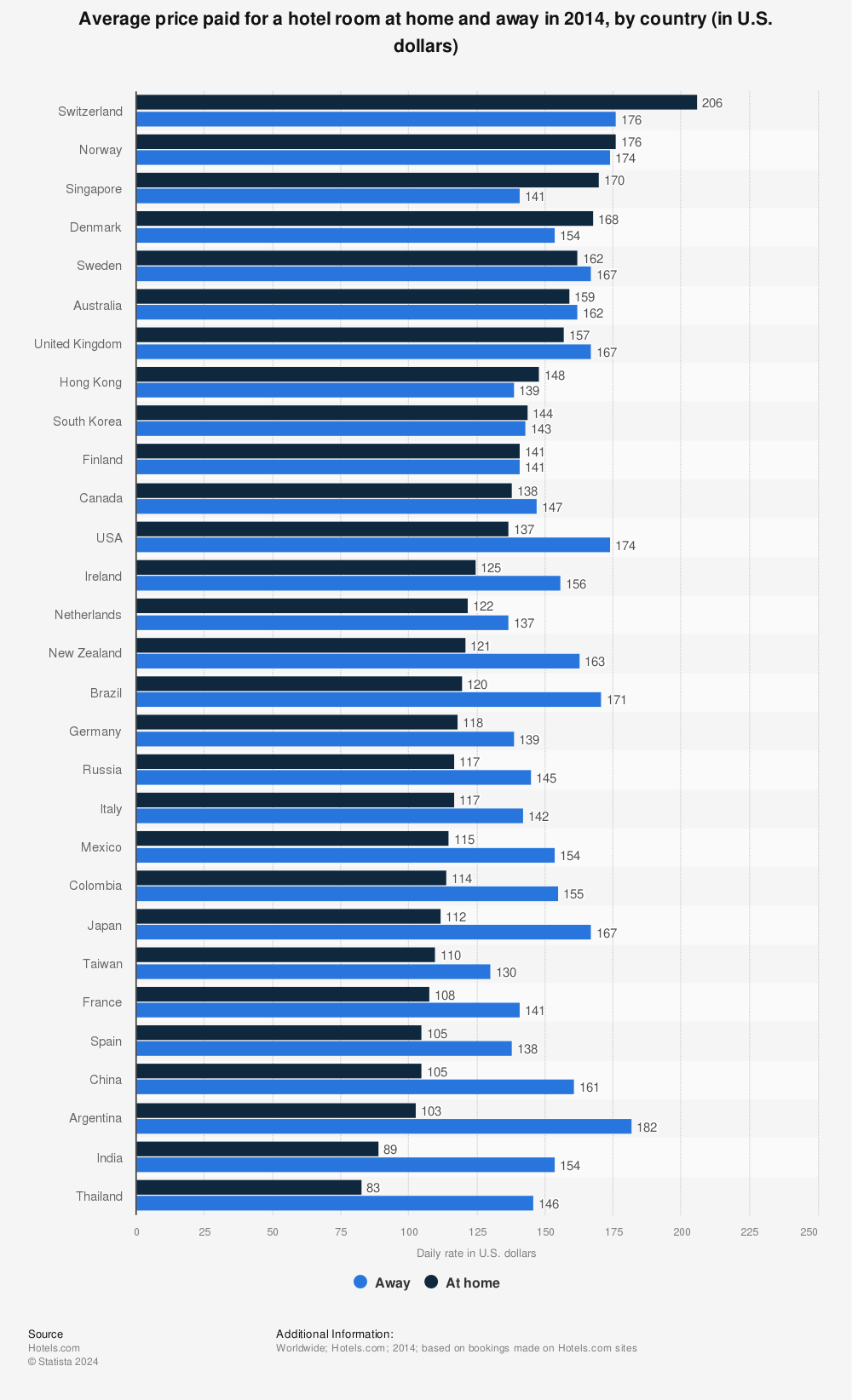This statistic shows the average price paid on daily basis for a hotel room at home and away by people from different countries in 2013. According to Statista, Indians spent on average 90 US dollars when traveling within their country and 150 US dollars when traveling outside their home country.
Interesting to note that India's daily rate spent with in country is quite low, only two countries in competition are offering lower rates than India, these are Malaysia and Thailand. On the other side, Indians are spending good when they visit a foreign national.
This gives solid reason for other nationalities to visit India as it offers varieties at affordable rate.

Comments
Post a Comment